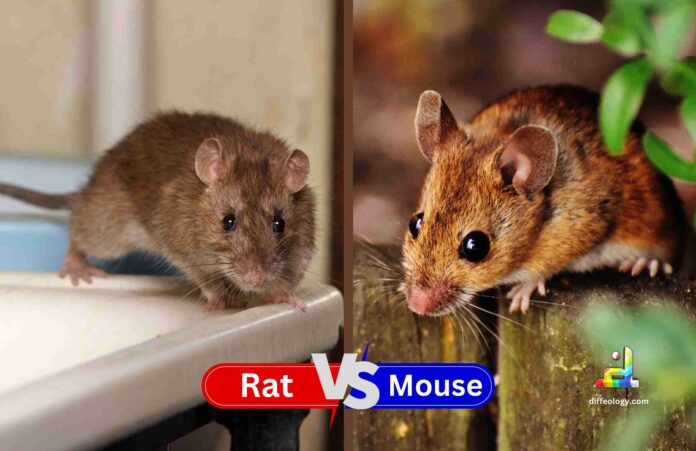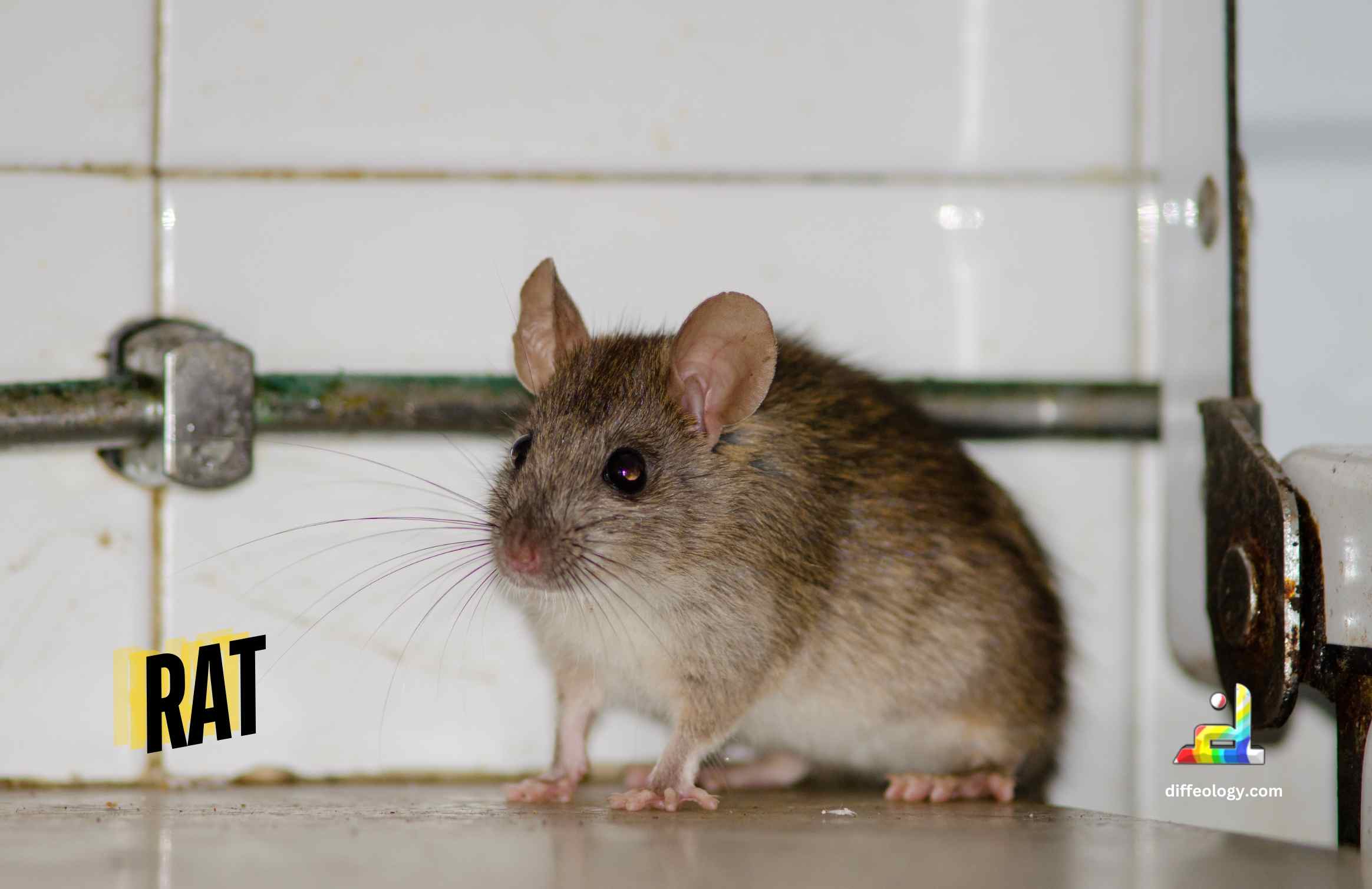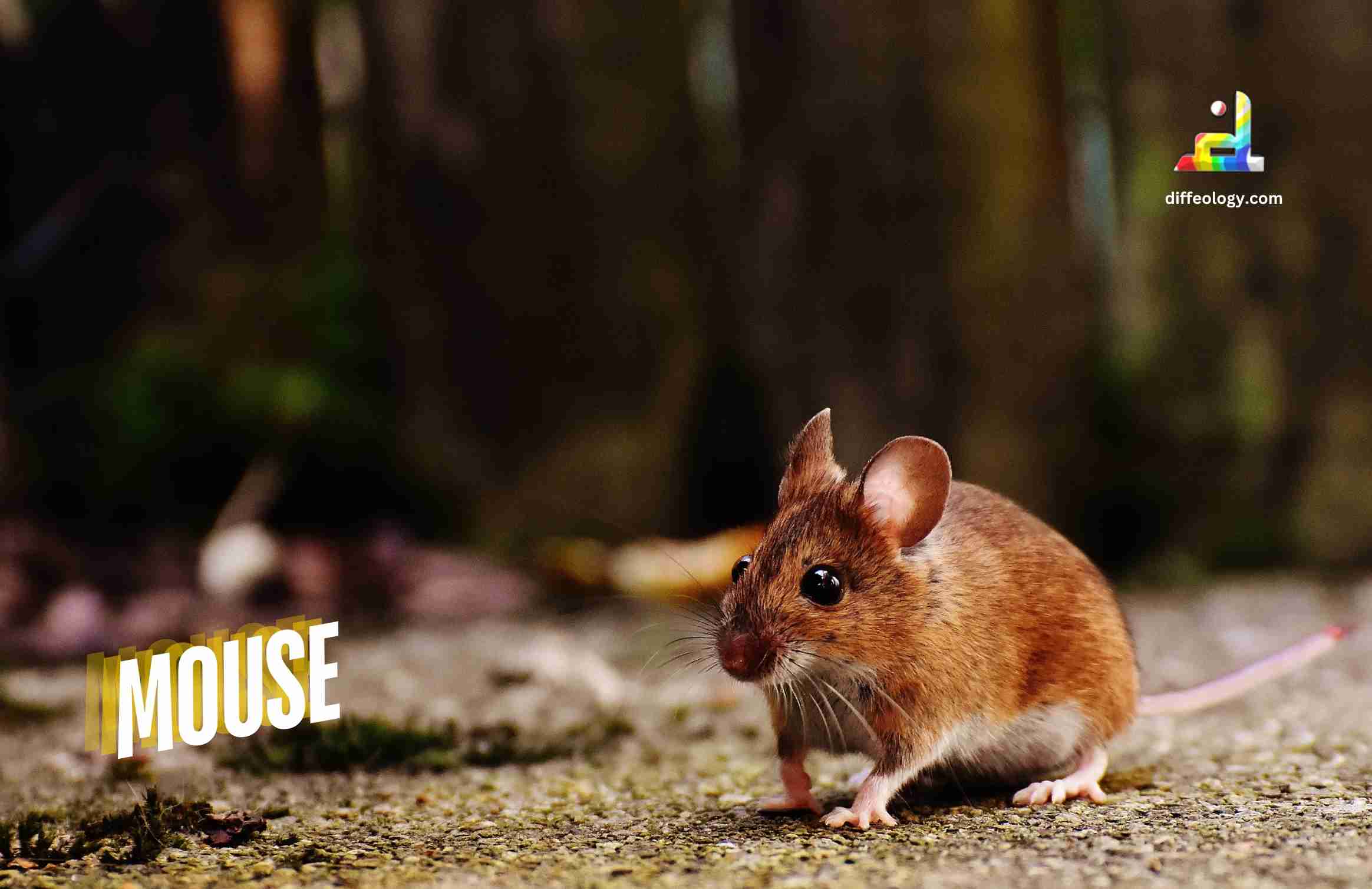Imagine a world where tiny creatures scurry through fields and homes, each with its own unique story to tell. Among these small wonders, rats and mice stand out as familiar yet distinct beings. Despite their similar appearances, there is a huge difference between Rat and Mouse that sets them apart in the animal kingdom. Understanding these differences not only enriches our knowledge but also helps us appreciate the diversity of life around us.
Rats and mice belong to the same scientific family called Muridae, but their characteristics diverge in significant ways. From their size to their behaviors and habitats, each species has evolved distinct adaptations to thrive in their respective environments. Delving deeper into these differences unveils a fascinating world where even the smallest details matter. So, let’s embark on a journey to explore the nuances between these two intriguing rodents.
Main Difference Between Rat and Mouse
Rats and mice are both types of small animals that look similar but have important differences. Rats are bigger than mice, about 9-11 inches long without their tails, while mice are smaller, around 2.5-4 inches long. Their tails are different, too: rats have bare, scaly tails, while mice have long, thin, and hairy tails. Rats also have bigger heads and feet compared to mice. In terms of behavior, rats are more careful and less curious than mice. They like to protect their territory and can be cautious around new things. Mice, on the other hand, are curious and can easily adapt to new places. They like to explore and find new things around them. These differences in size, appearance, and behavior affect how rats and mice live and interact with people and their surroundings.
Rat Vs. Mouse
What is a Rat?
A rat is a medium-sized rodent known for its long tail and sharp front teeth that never stop growing. These animals belong to the genus Rattus and are found worldwide, living in diverse habitats, from sewers and fields to homes and forests. Rats are highly adaptable and intelligent creatures, capable of solving complex problems and learning from their environment.
Rats are nocturnal, which means they are most active during the night. They have excellent senses of smell, taste, and hearing, helping them navigate and find food even in dark environments. Despite their bad reputation, rats are social animals that live in groups called “mischief.” They communicate through squeaks and squeals, using different sounds to convey danger, food sources, or even playfulness.
Read Also: Difference Between Beaver and Woodchuck
Rats are omnivores, meaning they eat both plants and animals. Their diet includes grains, fruits, vegetables, insects, and small vertebrates. This versatility in diet allows them to survive in various conditions and explains why they can thrive in both rural and urban settings. Despite being pests in some situations, rats also serve as prey for many predators like birds of prey, snakes, and mammals, contributing to the balance of ecosystems.
What is a Mouse?
A mouse, scientifically known as Mus musculus, is a small rodent found all over the world, often living close to human settlements. These creatures have distinctive features such as a pointed snout, round ears, and a long, scaly tail that can be as long as their body. Mice are incredibly adaptable and can thrive in various environments, from fields and forests to homes and cities.
Mice are known for their rapid reproduction rates. A female mouse can give birth to a litter of up to 12 pups every three weeks, making them prolific breeders. They primarily feed on seeds and grains but are opportunistic eaters, adapting their diet to whatever is available. Due to their small size and ability to squeeze through tiny openings, mice can sometimes be considered pests when they enter homes in search of food and shelter.
Read Also: Difference Between Sea Turtles and Land Turtles
Despite their small size, mice play a crucial role in the ecosystem as prey for many predators like owls, snakes, and even domestic cats. Their behavior and physiology have also made them valuable subjects for scientific research, contributing to our understanding of genetics, biology, and diseases.
Comparison Table “Rat Vs. Mouse”
| Size | Generally larger, robust bodies | Generally smaller, more slender bodies |
| Tail | Long, scaly tail | Long, thin tail |
| Ears | Small in proportion to body size | Large in proportion to body size |
| Behavior | Generally more cautious and wary | Generally more curious and explorative |
| Lifespan | Average lifespan of 2-3 years | Average lifespan of 1-2 years |
| Teeth | Powerful, capable of gnawing through tough materials | Smaller, suited for finer tasks like nibbling grains |
| Droppings | Larger and fewer in number | Smaller and more frequent |
| Habitat | Prefer to live in burrows and underground spaces | Often found in various habitats like fields, homes, and forests |
| Reproduction | Can reproduce quickly and in large numbers | Reproduce rapidly but in smaller numbers compared to rats |
Difference Between Rat and Mouse in Detail
1. Physical Appearance
Rats and mice may look similar at first glance, but they have distinct physical characteristics. Rats are generally larger than mice, with a typical adult rat measuring around 9-11 inches in length from nose to tail. They have long, scaly tails that are often as long as their bodies. Rats also tend to have more robust bodies compared to mice, with broader heads and thicker tails.
On the other hand, mice are smaller and more delicate. An adult mouse usually measures about 2.5-4 inches in length, not including the tail. Their tails are thinner and more hairy compared to rats. Mice have a more slender body shape with a pointed nose and ears. They are proportionally larger in relation to their body size than those of rats.
2. Behavior and Habits
Rats and mice exhibit different behaviors and habits, which can be important to understand their lifestyles. Rats are typically more cautious and less curious than mice. They tend to explore their surroundings cautiously and are often more nocturnal, meaning they are active during the night. Rats are known for their ability to gnaw through various materials, which is a behavior related to their strong teeth.
Mice, on the other hand, are curious and agile creatures. They are more likely to explore new objects and environments with curiosity. Mice are also more adaptable and can adjust well to different habitats. They are often active both during the day and night, though they prefer quieter, dark places. Unlike rats, mice are known for their ability to climb and jump, which helps them escape predators and find food.
3. Social Structure
The social structure of rats and mice differs significantly. Rats are more likely to live in hierarchical groups with a dominant rat (alpha rat) that controls the group. They establish territories and have a more complex social organization compared to mice. In laboratory settings, rats often show signs of empathy and cooperation, making them interesting subjects for studying social behavior.
Mice, on the other hand, have a more egalitarian social structure. They tend to live in family groups composed of a male, several females, and their offspring. Unlike rats, mice do not establish strict hierarchies within their groups. However, dominance can still be observed, especially among males competing for mates. Mice are also known for their ability to communicate through ultrasonic vocalizations, which helps them coordinate social interactions.
4. Dietary Preferences
Rats and mice have slightly different dietary preferences, although both are considered omnivores. Rats are more likely to eat a wider variety of foods, including meat, grains, fruits, and vegetables. In urban environments, rats are notorious for scavenging human food waste. It contributes to their adaptability and ability to survive in various habitats.
Mice, on the other hand, have a preference for seeds and grains. Their diet in the wild consists mainly of plant matter, including seeds, nuts, and fruits. In agricultural settings, mice can be significant pests because they damage crops by consuming seeds and grains. Unlike rats, mice are less likely to scavenge for food in urban areas, preferring quieter and less disturbed environments.
5. Reproductive Patterns
Reproductive patterns differ between rats and mice, influencing their population dynamics. Rats have a higher reproductive rate compared to mice. A female rat can produce up to 7 litters per year, with each litter containing 6-12 pups on average. This rapid reproduction rate allows rat populations to grow quickly under favorable conditions.
Mice also reproduce quickly but generally have smaller litters than rats. A female mouse can have 5-10 litters per year, with each litter containing 3-14 pups. Mice reach sexual maturity earlier than rats, which contributes to their ability to rapidly increase their population size. Understanding these reproductive patterns is crucial for pest control strategies and managing rodent populations.
6. Health Concerns
Both rats and mice can pose health risks to humans, but they carry different diseases and parasites. Rats are known carriers of serious diseases such as leptospirosis, hantavirus, and plague. These diseases can be transmitted to humans through direct contact with rat urine feces. Also, saliva, or indirectly through contaminated food and water. Proper sanitation and pest control measures are essential for reducing the risk of rat-borne diseases.
Mice are less likely to carry diseases that are as dangerous to humans as those carried by rats. However, they can still transmit diseases such as lymphocytic choriomeningitis (LCM) virus and salmonellosis. Mice also harbor parasites like fleas and ticks, which can further spread diseases. Preventive measures such as sealing entry points and maintaining cleanliness can help reduce the likelihood of mice infestations and associated health risks.
7. Cultural Perceptions
Rats and mice have different cultural perceptions and symbolism in various societies. Rats are often associated with negative traits such as filth and disease in many cultures. They are sometimes used as symbols of cunning or betrayal in literature and folklore. However, in some Eastern cultures, rats are symbols of wealth and fertility, as seen in the Chinese zodiac.
Mice, on the other hand, are often depicted more positively in folklore and popular culture. They are sometimes portrayed as clever and resourceful characters in children’s stories and animated films. In some cultures, mice are symbols of innocence or playfulness. Understanding these cultural perceptions can provide insights into how rats and mice are viewed and represented in different societies.
Key Points Showing the Difference Between Rat and Mouse
Here are some key points showing the Difference between Rat vs Mouse.
- Size: Rats are usually larger than mice. Mice are smaller and more delicate.
- Appearance: Rats have longer tails and bodies. Mice have shorter tails and smaller bodies.
- Tail: Rat tails are thicker and scaly. Mouse tails are thinner and smoother.
- Ears: Rat ears are larger compared to their head size. Mouse ears are smaller and more proportionate.
- Behavior: Rats are often bolder and less afraid of new things. Mice are generally more timid and cautious.
- Intelligence: Rats are considered more intelligent and can learn tricks. Mice are smart, too, but usually less trainable than rats.
- Lifespan: Rats generally live longer, around 2-3 years. Mice have a shorter lifespan of about 1-2 years.
- Diet: Rats may eat slightly larger portions due to their size.
- Social Behavior: Rats are more social and often live in groups called packs. Mice can also live in groups but tend to be more territorial.
- Nesting: Rats build larger nests, usually in hidden spots. Mice create smaller nests, usually close to food sources.
- Droppings: Rat droppings are larger and more noticeable. Mouse droppings are smaller and often found in smaller quantities.
- Adaptability: Rats are very adaptable to different environments. Mice are also adaptable but may prefer quieter places.
- Wild vs. Domesticated: Wild rats and mice are different from their domesticated counterparts. Domesticated rats and mice have been bred to be more docile and friendly.
FAQs: Rat Vs. Mouse
Conclusion:
In conclusion, rats and mice may seem similar at first glance, but they lead remarkably different lives shaped by their unique traits. Whether it’s the larger, more robust rat or the smaller, more nimble mouse, each plays a crucial role in ecosystems worldwide. By understanding the Difference between Rat and Mouse in terms of size, behavior, and habitat preferences, we gain a deeper appreciation for the complexity of nature. These rodents, though often overlooked or misunderstood, contribute to the delicate balance of our natural world. So, the next time you encounter a rat or a mouse, take a moment to marvel at the diversity of life that surrounds us, even in the smallest of creatures.
References & External Links
- 10 facts about rats
- 10 Fun Facts About Mice You May Not Have Known



